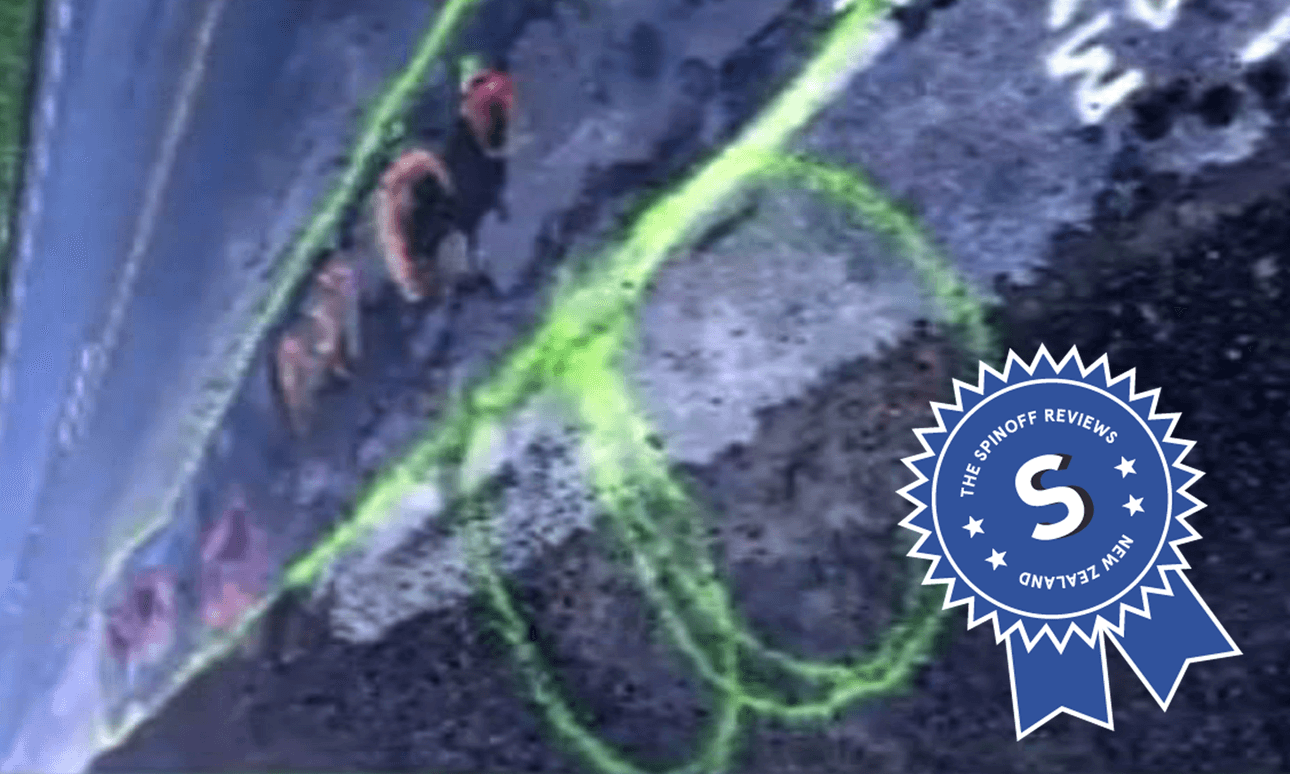We review the entire country and culture of New Zealand, one thing at a time. Today: the giant penises painted on potholes in Rodney District by Geoff Upson. Reviewed by Toby Morris
The greatest art is anger. At least, that’s what’s Auckland artist Geoff Upson suggests in his bold new work “Giant Penises highlight potholes on Kahikatea Flat Rd, near Waitoki in Rodney District” (2018, spray paint on asphalt). Frustrated at a lack of council action over potholes near his house, Upson has responded with a masterwork that not only highlights, quite literally, the pothole issue, but also serves as a brutal axe attack to the nation’s feverish fixation with asserting our dominance over the natural landscape with the hollow and endless pursuit building of new roads.
Upson has created giant yellow phalluses of national significance. We’re all giant cocks on a road to nowhere. Art is action, art is anger.
Indeed, this is not art as beauty. The form and execution are distorted, aggressive and mutated. Upson eschews bourgeois concerns of pleasant realism in favour of a brash and confrontational nouveau-naive scrawl. The phalluses are grotesquely long, 20 metres each, in a confrontational shade of industrial flouro yellow that suggests and inverts working class industrial class structures.
To the viewer driving by they’re are placed upside, testicles above the shaft – a bold inversion of the traditional conceptions of masculine status quo. The testicles themselves are naive, simplistic, evoking crude cartoon eyes drawn drunk, guilty and ashamed. They’re hairless and innocent but, echoing the shafts themselves, they’re concurrently bloated and virile, engorged and horrific; exaggerated, vain and overblown; a searing indictment of the nation’s roading fever dream.
The masterstroke forever, is the pink. Each individual pothole is highlighted in chemical burn pink, like pustulent weeping sores, each broken blight both celebrated and shamed. The potholes, Upson seems to suggest, are swollen infected sores on New Zealand’s fragile and distorted ego.
Not since Picasso’s Guernica (1937) have we seen such a pure expression of rage and fear and vulnerability. A crude howl at a cruel world. Bravo, Geoff Upson. Bravo.
VERDICT: A searing incision into the heart of the nation’s ego.
GOOD OR BAD: Incredible.

